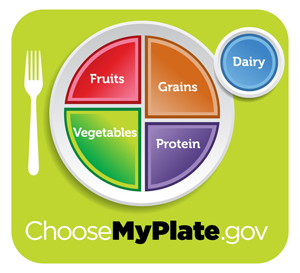Leaving the Pyramid to Ancient History
In 1992, the USDA introduced the food pyramid. The purpose of the food pyramid was to provide Americans with nutritional guidelines separating the “food groups” into hierarchal sections. These sections are smaller or larger based on the percentage a person should consume daily of each “group.” In effect, the pyramid represented an order of nutritional value.
The food pyramid is complex and often difficult to apply to individual meals. The nutritional guidelines it offers may not be off the mark, but the information that it provides has not been of use to a large demographic of Americans. The obesity epidemic affects more and more Americans each year. An estimated two-thirds of adults and one-third of children in the United States are overweight or obese. If information is important, then the material being provided to individuals struggling with obesity needed to be adjusted. For example, grains previously were the largest section. This could translate into over-consumption of refined carbohydrates which could further exacerbate the obesity epidemic.
After nearly twenty years, the USDA agrees. They have replaced the iconic pyramid with a more simplistic and familiar image–the plate. The USDA has ditched the Food Pyramid in favor of the MyPlate image. This change is meant to give Americans information about a healthy diet in a way that’s easier to swallow.

The MyPlate, as it has been named, is an illustration of a plate that is divided into four sections. These sections include: fruits, vegetables, grains and proteins. As understood from the image above, the new model recommends that half the plate be filled with fruits and vegetables, necessary to provide us with vitamins and fiber. The other side of the plate is subdivided into grains and proteins, equally important providers of complex carbohydrates and amino acids. In addition, there is a circular section, presumably to imitate a glass, representing one’s dairy consumption.
Ultimately, the MyPlate should help Americans make easy choices about food. As former First Lady Michelle Obama explains, “…[We] have time to take a look at our kids’ plates. As long as they’re half full of fruits and vegetables, and paired with lean proteins, whole grains and low-fat dairy, we’re golden. That’s how easy it is.”
MyPlate is the go-to source for accessible information about nutrition. In addition to the MyPlate image, the USDA will provide additional information about diet and exercise, including: information about weight-loss, helpful nutrition tips, and other how-to resources. So, leave the Food Pyramid in the past and model your meal on the MyPlate.